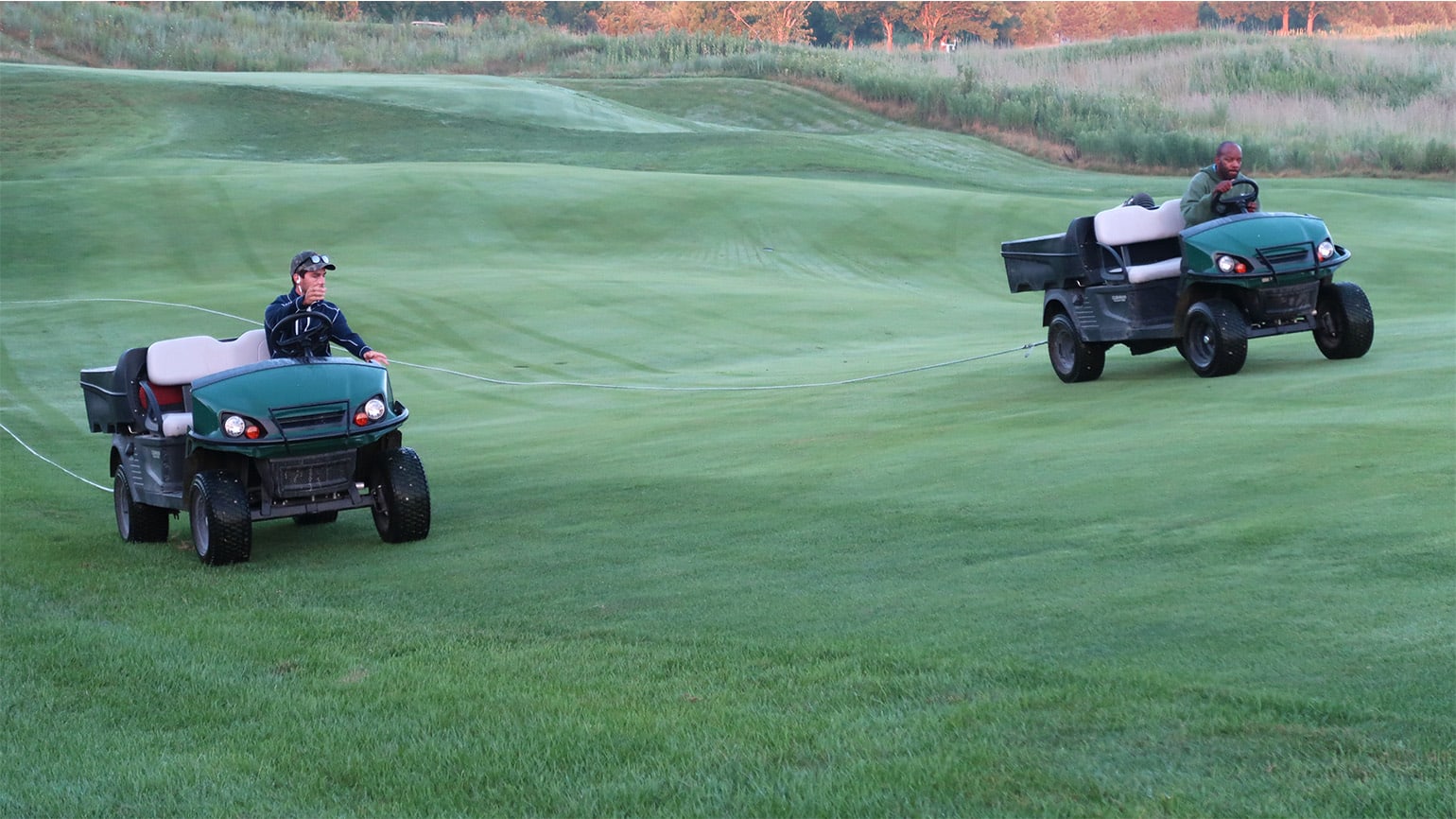USGA – Central Update – Displacing Dew Decreases Disease Development
Dew and disease pressure go hand in hand. Fungal pathogens like Rhizoctonia solani and Clairireedia spp can spread rapidly under heavy dew. Therefore, keeping leaf wetness to a minimum is an effective strategy for disrupting disease development and protecting your key turf areas.
The most common form of dew displacement is early morning mowing. For surfaces that are generally not mowed each morning, such as fairways and tees, removing the film of dew first thing in the morning can lessen disease severity. Allowing the turfgrass leaves to dry just 1 to 2-hours earlier could provide significant benefits and has been shown to improve fungicide performance. The practice is quite simple, and many courses are able to knock down the dew on all their fairways in as little as 1 hour or so.
Fairway dragging can be completed by an individual employee using a piece of PVC pipe or by two employees using a long, single piece of rope or hose. The latter approach is often faster but will require two separate vehicles. I recommend using a lead core rope, similar to what is used in commercial fishing operations. A 5/8-inch diameter rope works great. Make sure to attach the ends of the rope to a metal eye swivel hook. You want the rope to be able to rotate freely when attached to the hitch so that it does not become tangled or tied in a knot.
Dragging fairways doesn’t just reduce disease outbreaks. It can also be helpful for dispersing grass clippings and nuisance earthworm castings, thereby providing a more consistent and clean golf course presentation. Early morning golfers will appreciate having drier feet as well.
This article was originally written with USGA by John Daniels here.
Central Region Agronomists:
John Daniels, agronomist – jdaniels@usga.org
Zach Nicoludis, agronomist – znicoludis@usga.org
